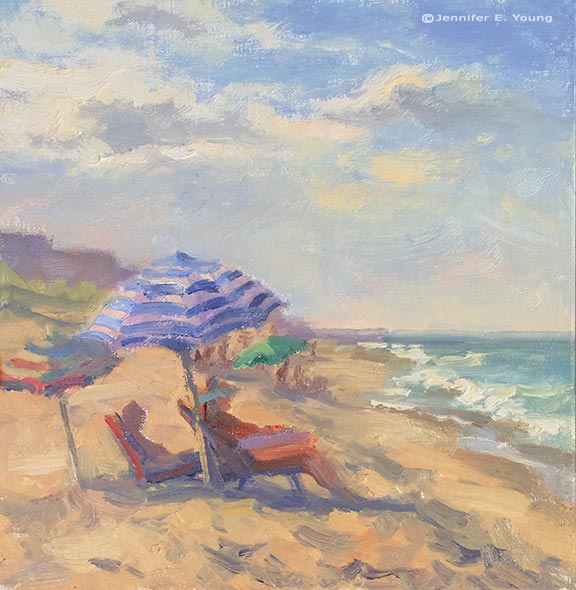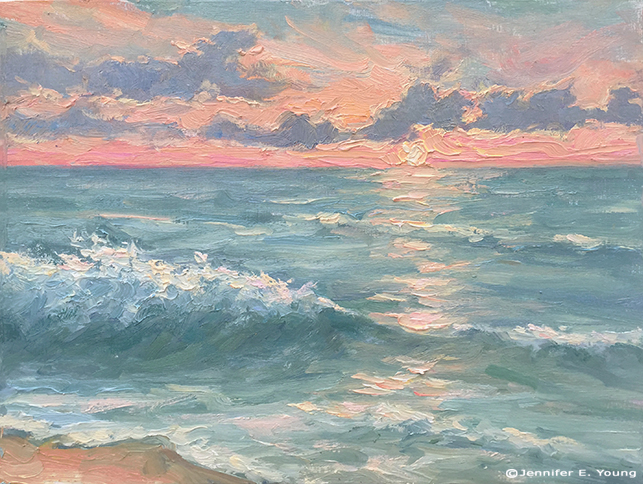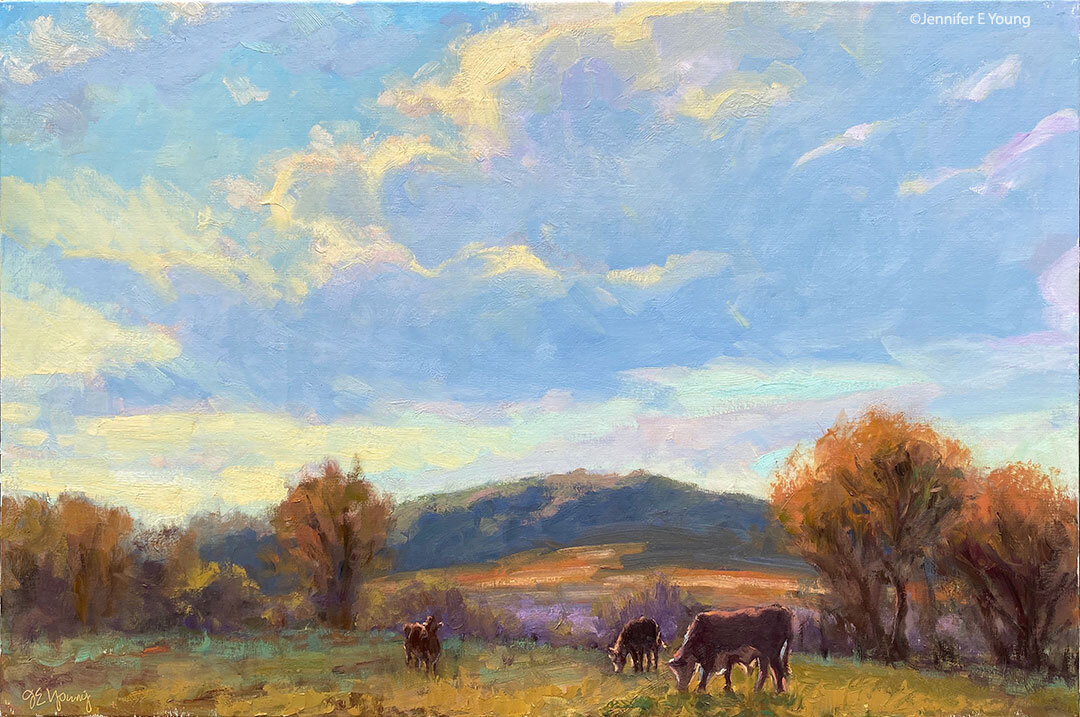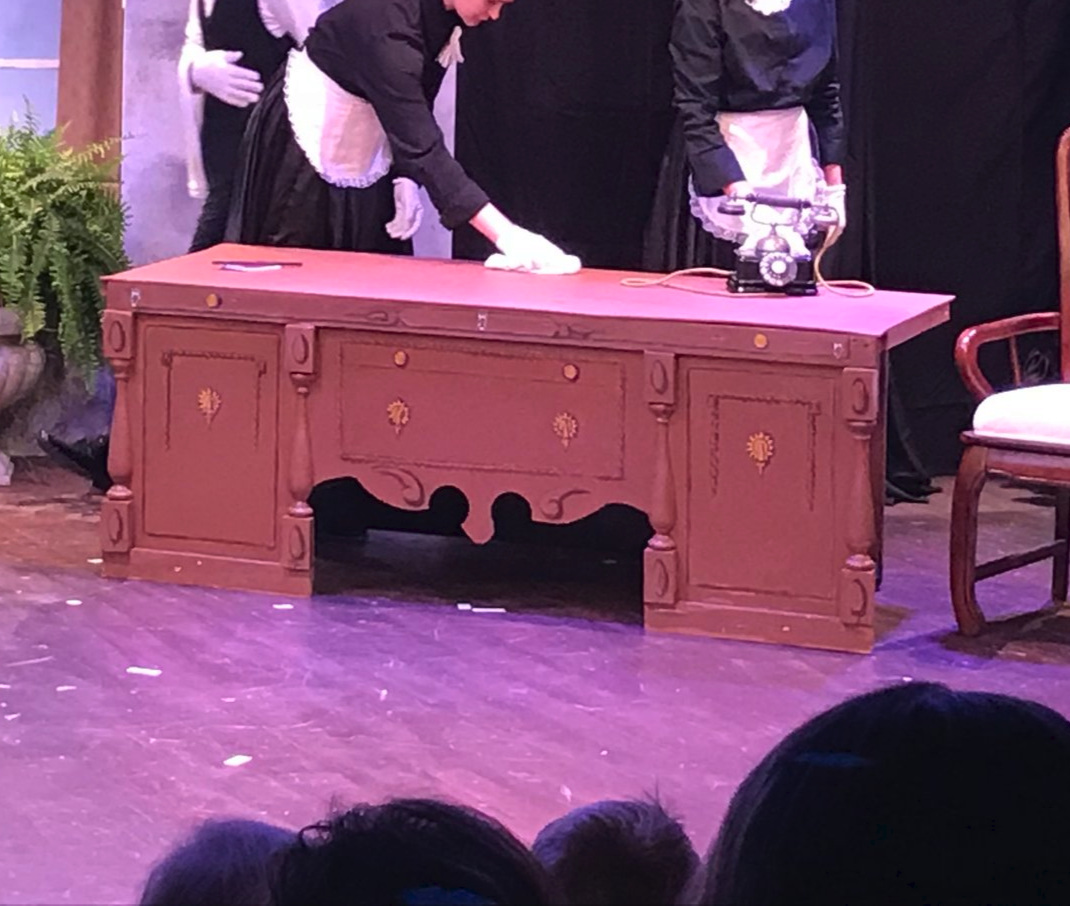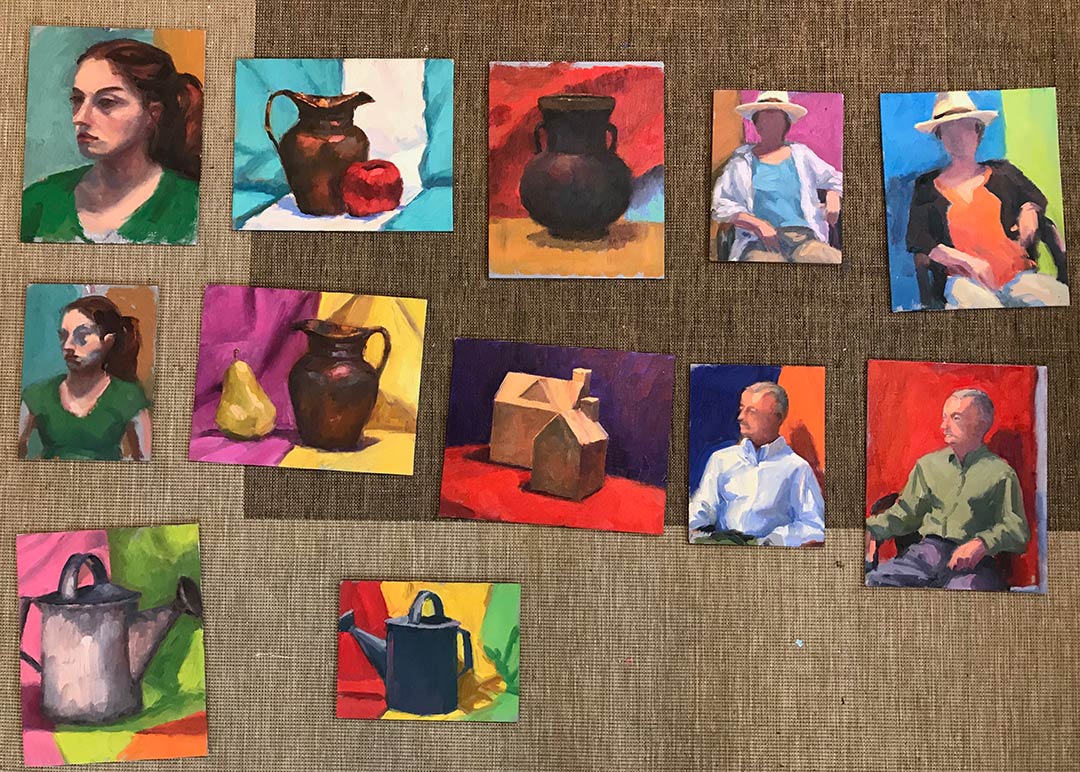Watching the Waves
/Here is the last plein air painting I did at the beach last week. It was a quickie, started around 4:30 or so and wrapping up around 6PM. Watching the waves is one of my favorite things to do when I'm at the beach.
What is it about the ocean that calls us so? I guess it is the mystery of it. Or maybe it's the rhythm of the tides? Or maybe it's just that it is the place where we all originated, and it's depths are still unknown. My daughter once asked me, "When does the ocean stop waving?" Exactly! It never does, though it never ceases in changing either.
Incidentally, as I was painting this little vignette of our neighbor with her blue striped umbrella, I was photographed by Hidden Outer Banks!
Check them out. It was perhaps the one time when I actually didn't mind having a picture taken in my bathing suit. ;-)


